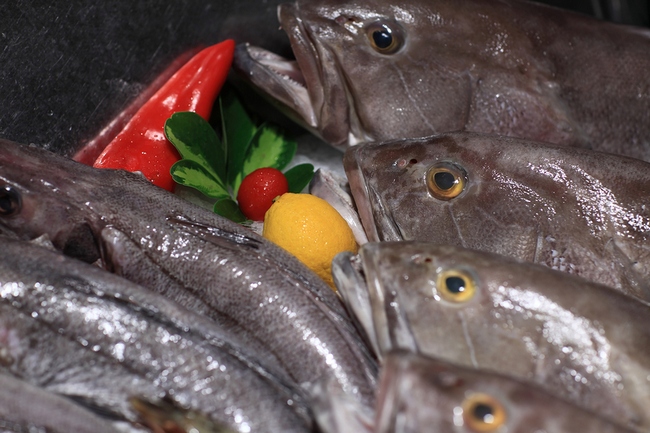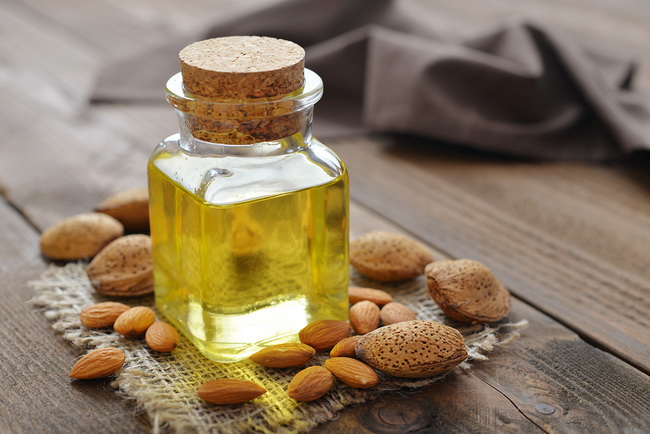- Make It Yourself Lavender Heart-Shaped Bath Bombs!
- 20 Things You Never Knew About “Down There”
- 12 Best Foods For Those Suffering From Arthritis Pain
- 12 Personal Hygiene Mistakes Almost Everyone Makes (Mom Never Told You About #4!)
- 15 Medicinal Plants And Herbs From The Cherokee People
- 12 Mind-Blowing Benefits Of Drinking Coconut Water During Pregnancy
- 12 Outstanding Winter Foods That Won’t Fatten You Up Like A Christmas Turkey
Top 6 High Fat Foods You Should Be Eating

Photo credit: bigstock.com
Take a walk down any aisle in any supermarket and you will be bombarded with “low fat” and “no fat” choices. This low fat diet craze has only succeeded in making Americans fatter than ever before. Why is that? If you are what you eat, doesn’t fat make you fat?
Well, if that were true, then Americans should be the thinnest people in the world. We have low fat everything it seems, so why isn’t this working?
The reason is because our bodies do need some fat. Fat is one of those things that you need to eat in moderation. Many people think that because a food is low fat or no fat, that they can eat as much as they want without repercussion, and this isn’t true. Think about it: candy such as jelly beans or gummy bears have no fat. How much of those types of foods do you think you can eat and not gain weight? Calories still count, friends.
The body needs some fat in its diet. It keeps your skin and hair healthy, gives you energy, helps you to absorb the vitamins in your food, and even keeps you warm. Unsaturated fats are “good for you” fats. Unsaturated fats, such as polyunsaturated and monounsaturated, are all considered to be essential fatty acids because we must get these from the foods we eat since our bodies do not make them. Good fats would be the omega-3 and omega-6 fats you have heard so much about. Polyunsaturated fats lowers overall total cholesterol levels and monounsaturated fats increase our good cholesterol levels.
Most people need about 20 to 35 percent of their total daily calories from fat. Less than 10 percent of their total calories should come from saturated fats. So where can we get those healthy unsaturated fats? Keep reading for the best 6 healthy fats you can really feel good about eating.
1. Fatty Fish
This would include wild salmon, tuna, sardines, and mackerel. Be sure you are getting wild caught salmon, such as chinook, rather than factory farmed salmon, which are often contaminated with toxins and are fed very unhealthy diets. A 3 ounce serving of wild caught salmon has about 9 grams of fat, 4 grams of which are monounsaturated and 2.5 polyunsaturated. Canned salmon is another good choice and makes an excellent choice for lunch or dinner.
2. Avocados
Talk about fat! Just half an avocado has about 15 grams of fat, however, 10 grams of those are monounsaturated and 2 are polyunsaturated. So forget the mayo and try spreading some avocado on your next sandwich, cut up some avocado for your salad, or make an omelet. On the other hand, guacamole is something no one can turn down!
Continue to Page 2

Photo credit: bigstock.com
3. Almonds
Actually, almost any nut makes a fantastic, healthy fat snack, but we mention almonds because they are the nut that has the lowest calories. One ounce of almonds (about 23 nuts) has 14 grams of fat, 9 of which are monounsaturated and 3.5 of which are polyunsaturated. Since nuts are high in calories, be sure to snack on these in moderation. Just about a handful of most nuts each day will do the trick, giving you the fats your body wants but the flavor and crunch you crave.
4. Eggs
If you have been avoiding eggs because of cholesterol, you can forget it. That old myth has been thrown out the window! One large egg (including the yolk) has 2 grams of monounsaturated fat and 1 gram of polyunsaturated fat. So have some for breakfast, or hard boil a few eggs for a terrific lunch or mid-afternoon snack.
5. Flax Seeds
Whole flax seeds have 4 grams of fat, 3 polyunsaturated and 1 gram of monounsaturated. Flax seeds have from between 75 to as much as 800 times more lignans, the part of plants that act like antioxidants, more than any other plant. You can sprinkle flax seeds into salads, soups, yogurt, and oatmeal.
Other seeds are good sources of fat as well, including sesame seeds, a tablespoon of which has 2 grams of polyunsaturated fat and 1.5 grams of monounsaturated fats. Pumpkin seeds are another great option with one ounce of pumpkin seeds containing 2 grams of monounsaturated fats and 2.5 grams of polyunsaturated fats.
SEE ALSO: How To Fight With Essential Fatty Acid Deficiency Infographic
6. Olives (and their oil)
Adding about 10 large sized olives into your next salad will give you 5 grams of healthy fat, 3.5 grams of monounsaturated and .4 polyunsaturated. If you aren’t crazy about olives, then use olive oil! One tablespoon has 13 grams of fat, 10 of which are monounsaturated fats and 1.5 being polyunsaturated.
The answer to the fat question isn’t cutting all fat out of your diet, it’s learning to make healthy choices and replace bad fats (trans-fats) with healthy, good fats.
Sources:

































justdooit
Mar 23, 2015 at 5:54 pm
Problem with olive oil…it can become rancid. Opening the bottle let’s oxygen in…oxidizing the contents in the bottle. Use coconut oil instead..